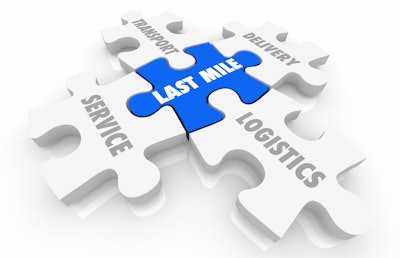
Today, efficiency is the new growth strategy, with many businesses increasingly prioritizing efficiency over expansion in today's evolving economic landscape. Right-sizing through aligning your fleet's size and composition with actual operational needs has become a focus, especially as companies explore flexible, on-demand mobility solutions. This impacts last-mile delivery as changing fleet composition requires businesses to consider how vehicles are deployed.
The competitive advantage of right-sizing
Companies that effectively right-size their fleets — from long-haul operations to last-mile delivery — benefit from cost savings, increased flexibility, and improved efficiency. They are better positioned to adapt to market changes without the burden of excess assets. If your fleet isn't optimized for efficiency, now is the time to act.
The hidden costs of an oversized fleet
Maintaining an oversized fleet can lead to several inefficiencies:
· Elevated ownership and leasing expenses: Underutilized vehicles still incur leasing fees, depreciation, and financing costs.
· Increased maintenance and repairs: A larger fleet results in higher maintenance expenses and unplanned repairs.
· Registration and storage costs: Vehicles, even when unused, must remain licensed and registered, creating ongoing expenses. In addition, storing excess vehicles can be costly and exposes them to risks such as vandalism or damage from storms.
· Operational complexity: Managing a surplus of vehicles adds administrative burdens, requiring more staff and resources.
Strategies for effective right-sizing
A data-driven approach to fleet size can lead to significant cost savings and operational improvements. Implementing a successful right-sizing strategy involves many of the following imperatives:
· Analyzing fleet utilization data: Utilize telematics and fleet management software to assess vehicle usage patterns. Metrics such as miles driven, idle time, and trip frequency can identify underutilized vehicles. Notably, 83% of fleet operators now use telematics to monitor such data.
· Leveraging vehicle-sharing strategies: Vehicle-sharing approaches can enhance fleet utilization, control budgets, and reduce environmental impact. A key component is Mobility-as-a-Service (MaaS), which integrates various transportation services into a single accessible platform.
· Utilizing sharing technology for driver access: Employ digital tools to manage vehicle assignments across multiple users with role-based access. This ensures the right, qualified drivers are in the right vehicles, supported by digital ID verification and key management systems.
· Implementing predictive maintenance: Leverage predictive maintenance technologies to anticipate and address vehicle issues before they lead to breakdowns, thereby reducing downtime and maintenance costs. This proactive approach ensures vehicles are in optimal condition, supporting efficient operations.
· Aligning fleet composition with operational needs: Evaluate whether your fleet has the appropriate mix of vehicle types and sizes to meet current operational demands efficiently. This may involve replacing larger, less efficient vehicles with more fuel-efficient models or integrating electric vehicles to help reduce emissions and fuel costs.
· Integrating advanced fleet management technologies: Embrace technologies such as AI and IoT to enhance route planning, monitor driver behavior, and improve overall fleet efficiency. Integrating these technologies can change fleet management systems, leading to more informed decision-making and optimized operations.
Last-mile delivery trends and impact
Evolving last-mile delivery demands are also reshaping fleet composition, forcing businesses to rethink how vehicles are deployed and sized for maximum efficiency. Many trends are impacting last-mile delivery strategies across fleet operations, redefining what an “optimized” fleet looks like.
The rapid growth of e-commerce, urbanization, and consumer demand for faster deliveries has made last mile logistics one of the most dynamic areas in fleet management. This final leg of the delivery process, often the most expensive and operationally complex, has significant implications for how companies approach fleet right-sizing. Several trends are shaping last-mile delivery:
· Route optimization technology: AI-driven routing solutions are enabling fleets to maximize delivery density, reduce miles traveled, and improve driver productivity. This supports right-sizing by ensuring fewer vehicles can achieve the same—or greater—delivery volumes.
· Gig economy and flexible driver models: The rise of on-demand delivery drivers allows companies to scale capacity up or down quickly without maintaining an oversized permanent fleet.
· Vehicle sharing across companies and drivers: In an environment where routes change daily, vehicle sharing allows fleets to optimize utilization across multiple companies and drivers. This reduces the need to purchase and hold excess vehicles for peak-demand days, lowering ownership costs while maintaining flexibility.
· Sustainability and regulatory pressures: Increasing urban restrictions on emissions are driving adoption of cleaner, smaller vehicles for city deliveries, reinforcing the benefits of a leaner, more specialized fleet.
· Electrification of last-mile vehicles: Many businesses are turning to electric vans and smaller EVs for urban deliveries. These vehicles not only meet sustainability targets but also reduce fuel and maintenance costs, aligning with right-sizing goals.
· Micro-fulfillment and urban warehousing: To reduce delivery times, companies are investing in smaller, strategically located distribution hubs closer to consumers. This reduces the need for larger fleets covering long distances and enables smaller, more agile vehicle deployment.
Understanding trends and integrating these last-mile delivery strategies into a right-sizing approach can ensure fleets remain agile, cost-effective, and capable of meeting evolving customer expectations while minimizing environmental impact. Empowering fleet operators and managers with the insights and tools needed to optimize their operations and achieve their business objectives is critical to their success.

![Pros To Know 2026 [color]](https://img.sdcexec.com/mindful/acbm/workspaces/default/uploads/2025/08/prostoknow-2026-color.mduFvhpgMk.png?auto=format%2Ccompress&bg=fff&fill-color=fff&fit=fill&h=100&q=70&w=100)








![Pros To Know 2026 [color]](https://img.sdcexec.com/mindful/acbm/workspaces/default/uploads/2025/08/prostoknow-2026-color.mduFvhpgMk.png?ar=16%3A9&auto=format%2Ccompress&bg=fff&fill-color=fff&fit=fill&h=135&q=70&w=240)








